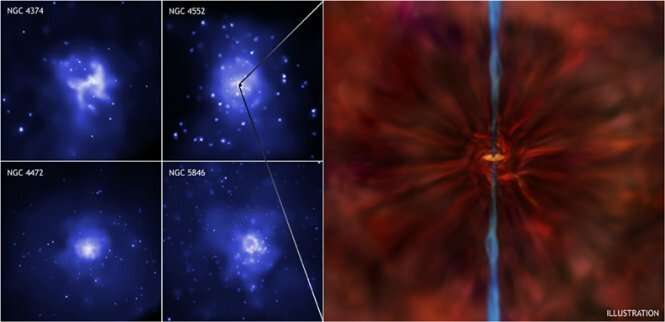Researchers discover black hole in our galaxy spinning rapidly around itself

A University of Southampton-led project has shown a black hole spinning near its maximum possible rate around its axis.
The study, funded by the Royal Society and published in the Astrophysical Journal, comprised an international team of astronomers led by the University and sheds more light on the characteristics of black holes and the environment surrounding them.
Using observations from state-of-the-art technology, the team of researchers found evidence that a stellar-mass black hole in our galaxy (known as 4U 1630-472) is rotating rapidly (at a speed of 92-95 per cent of the theoretically-allowed rotational speed) around its axis while sucking in falling material. It is subject to gravitational stresses and temperatures so high that it begins to shine brightly in X-rays, which were seen by astronomers using telescopes.
According to Einstein's General Theory of Relativity (GR), if a black hole is rotating rapidly, then it will modify the space and time around it in a way which is different than that for a black hole which is not rotating.
Such modifications from high spin rates leave an impression on the shape of the radiation from the material rotating very close to the black hole before disappearing. Therefore, if the change in shape of the emitting spectra can be determined somehow, then the GR can be used to measure the black hole spin.
The findings from this study are significant as previously high spin rates of approximately five black holes have been quantified accurately.
Dr. Mayukh Pahari, from the University of Southampton and lead author, said: "Detecting signatures that allow us to measure spin is extremely difficult. The signature is embedded in the spectral information which is very specific to the rate at which matter falls into the black hole. The spectra, however, are often very complex mostly due to the radiation from the environment around the black hole.
"During our observations we were lucky enough to obtain a spectrum directly from the radiation of the matter falling into the black hole and simple enough to measure the distortion caused by the rotating black hole."
A black hole is created when a massive star dies and the matter gets squeezed into a tiny space under a heavy force of gravity, trapping in the light. The gravitational force is so strong that the entire mass of the stellar core is crushed into a theoretical point. This point, however, cannot be directly seen, because nothing, not even light, can escape from a region around it, thus justifying the name of the object.
Astronomical black holes can be fully characterised by only two properties: mass and spin rate. Therefore, measurements of these two properties are uniquely important to probe some extreme aspects of the universe and the fundamental physics related to them.
More information: Mayukh Pahari et al. AstroSat and Chandra View of the High Soft State of 4U 1630–47 (4U 1630–472): Evidence of the Disk Wind and a Rapidly Spinning Black Hole, The Astrophysical Journal (2018). DOI: 10.3847/1538-4357/aae53b
Journal information: Astrophysical Journal
Provided by University of Southampton




















